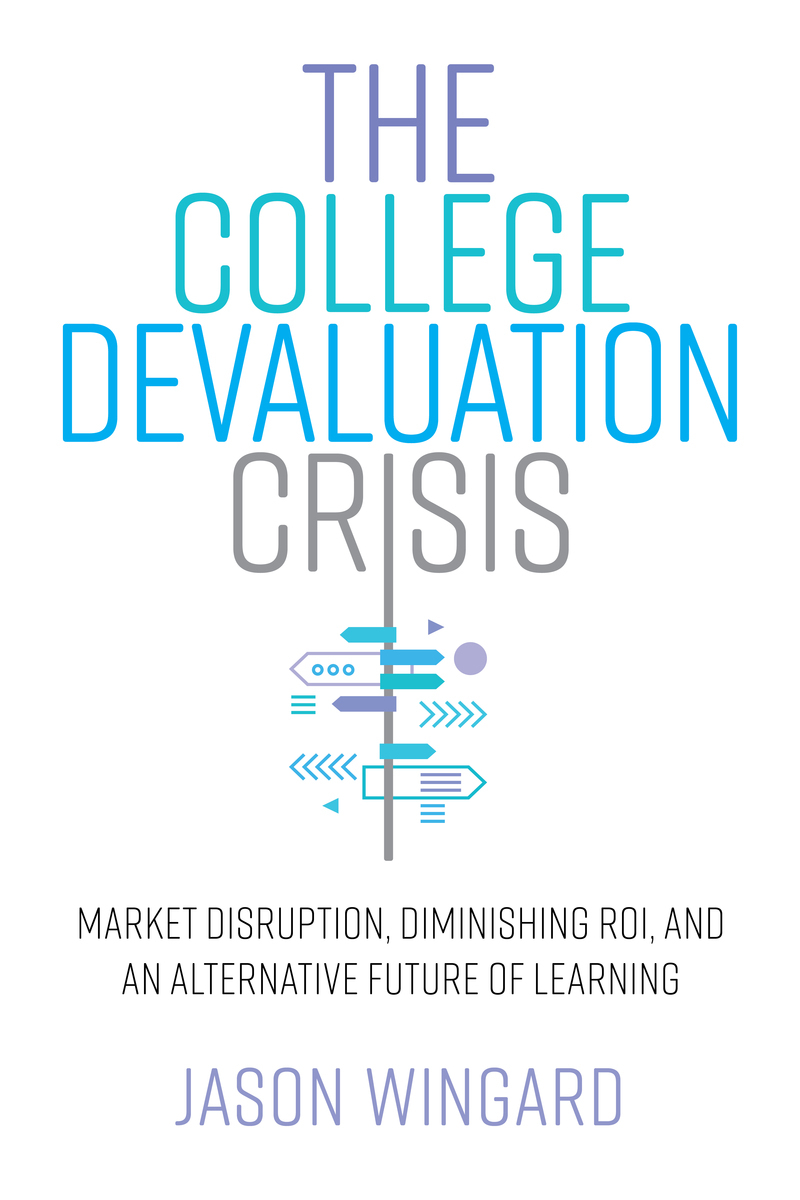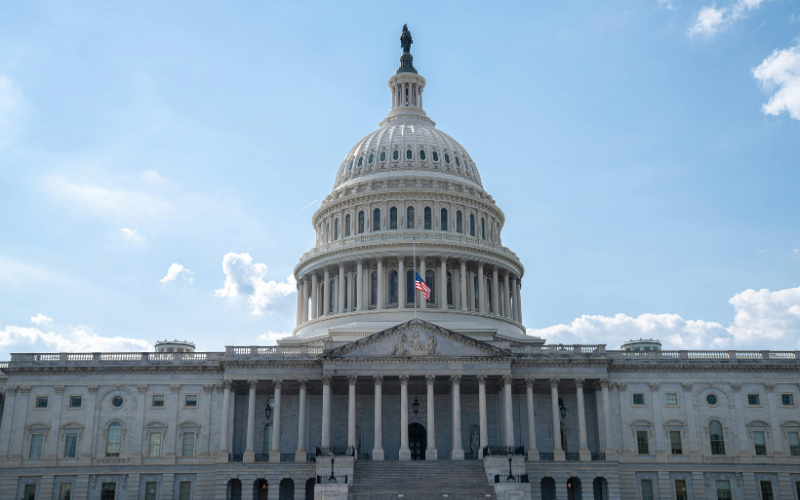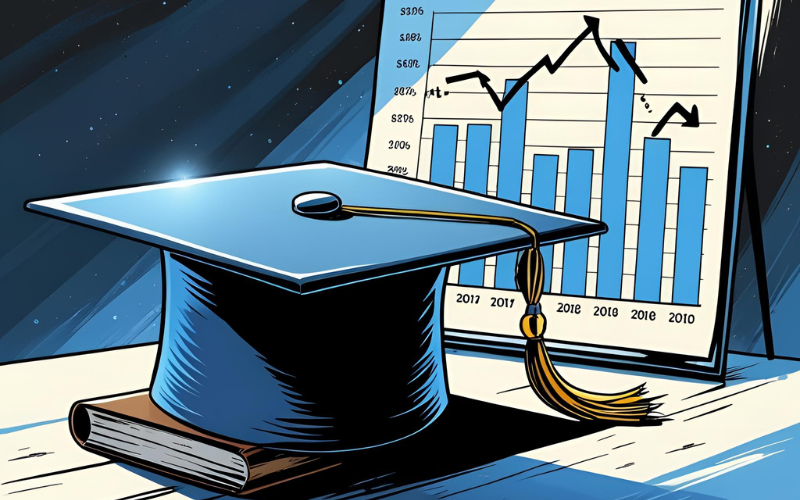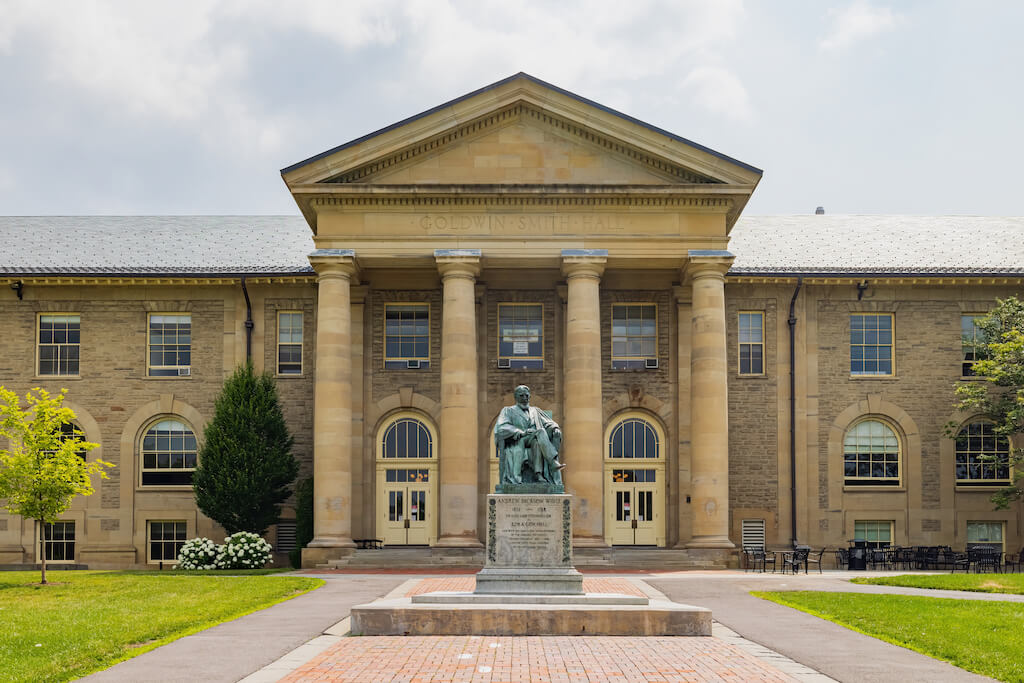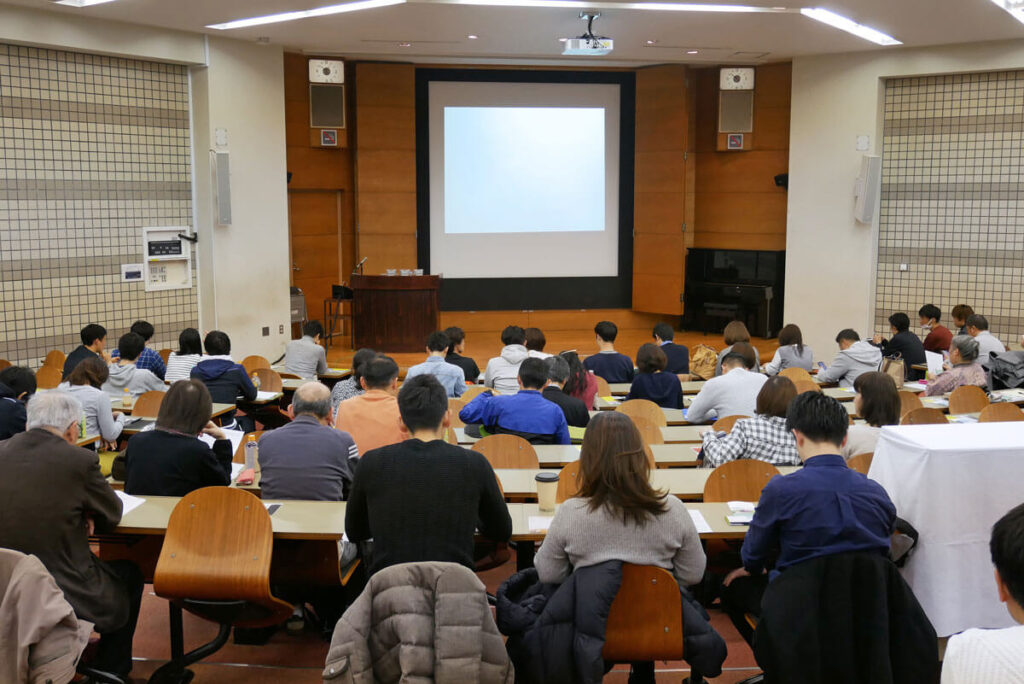Two recent books about higher education that I’ve read and reviewed, After the Ivory Tower Falls and The Great Upheaval, provided excellent context and analysis about why higher education will transform or perish. The College Devaluation Crisis, written by Jason Wingard and published in late 2021, provides a business-like analytical approach to an industry in decline. Surprisingly (or not, depending on your perspective), the author currently serves as president of Temple University. If you expect a sitting college president to hold back on his criticism of his industry, you are mistaken.
Dr. Wingard organized his book into three parts. Part I: The Evolution of Job Readiness and Credentialing in the United States serves as an introduction to the current state of where we are today with traditional higher education and alternative education. Part II: Innovation and the Rise of Competitive Higher Education Alternatives is the largest section of the book and provides substantial details about business models, college partnerships, employer partnerships, disruptive providers, and bridge-builders. Part III: Demystifying Gap Trends and Promoting a Call to Action provides 10 call-to-action recommendations as well as an overview of evolving education trends.
Well-written research papers and books maintain the readers’ interests by weaving a storyline throughout the presentation of evidence and conclusions. Dr. Wingard’s stories are closer to case studies but nonetheless present formidable arguments that college leaders and board members should consider as they consider their institutions’ future direction. Early on, the author makes three statements that the succeeding chapters and case studies support.
- The efficacy of the college degree as a guarantee of value hit its peak circa 2010.
- By 2030, a college education and the degree that assures it will be replaced as the dominant pathway for the kind of talent development that presages professional readiness and career success.
- [A new world of work] requires a fresh set of skills, and the pathway to building and credentialing those skills does not go through the ivied gates of today’s colleges and universities.
Setting the stage for contrasting alternative learning models with traditional learning models, Dr. Wingard provides an overview of each phase of the Enter, Discover, Learn, Assess, and Credential learning model and contrasts traditional learning with alternative learning. When describing the credential phase of the traditional learning model, he writes that the greatest strength of a college degree is that “it carries a lot of weight in terms of serving as the universal and recognized standard for higher education attainment.” The statement that follows should be unnerving for someone focusing on traditional higher education: “But what the college degree does not tell anyone at all is what the degree holder knows how to do and is capable of achieving with that set of skills.”
The five linear phases of the traditional learning model are complemented by the additional of a sixth phase to describe the alternative learning model. That phase, Connect, describes how learners “find or are recruited for jobs on the basis of validated skills data.” Another notable difference is that the phases are not linear in this model but encircle “Skills Centered.” Dr. Wingard provides many specific examples of alternative learning providers and the ways in which they are making a difference. Simply listing those companies and institutions does not provide an accurate overview, so I recommend reading the book for a more comprehensive description and understanding.
The ten calls to action are worth describing and are listed below.
- Traditional education providers should invest in, engage, and prioritize instructional design teams at the department level who are
- Experienced professionals skilled in the theory and best practices of adult learning;
- Empowered to plan, develop, monitor, and evaluate (via the tenure and promotion process) all curricula and teaching on a semester-by-semester basis;
- Focused on and authorized to limit traditional “chalk and talk” rote instruction in favor of experiential, multimodel, and project-based designs.
- Employers need to create a culture of learning if they want to adapt to future work trends, support continuous upskilling, and optimize productivity of their employees.
- Colleges and other education providers need to reduce costs to remain a valuable and viable option for learners. Alternative education providers should capitalize on their agility to aggressively compete for, and capture, share in the postsecondary education marketplace by
- Leveraging a business model that markets and provides access to desperately needed, cheaper service, at scale, for a wider and more diverse segment of learners;
- Validating the value of that cheaper service by utilizing the proven efficacy of the alternative education model versus the traditional model;
- Engaging in public-private partnerships to further create funding subsidies and solutions for learners.
- Learners should develop and maintain a personal, dynamic lifelong education plan that
- Identifies and tracks strengths and gaps in personal skills and competencies;
- Maintains access to sources that preview specific skill needs or demands and related job opportunities from employers;
- Leverages resources (advisory services, technology tools and platforms, and so on), to provide professional, just-in-time guidance and organized, tagged, and “stackable” pathway support toward skill-based and credential targets.
- Alternative education providers should align with peer providers and employers to establish an industry clearinghouse for credentialing that
- Prvides a standardized, global framework for assessing and documenting employee skills data;
- Provides a standardized, global credential that is universally recognized and accepted;
- Launches an inaugural network of employers who demonstrate the effective cohesive utility of the clearinghouse and advocate for widespread adoption.
- Alternative providers need to build and introduce a new universal model that currently does not exist to assess and measure people skills (both hard, technical skills and soft skills) to
- Support job seekers who seek to demonstrate mastery across a skills continuum;
- Support employers who seek both an objective assessment of job seeker qualifications and a tool for determining existing employee gaps, competence, and potential;
- Support colleges that seek to continuously redesign curricula based on the skill assessments of their students and skill needs of would-be partner employees.
- Traditional education providers need to establish partnerships with employers and companies that provide bridge services to students to
- Ensure that a curriculum stays directly relevant to labor market demands;
- Incubate collaboration opportunities to support the instructional design process, identify and engage professional mentors, and create supplemental on-the-job work experiences;
- Cultivate a pipeline between students with targeted profiles and managers with specific job needs.
- Traditional education providers should implement a strategy for a campuswide learning platform solution that
- Allows focus on instructional design and delivery versus management of a team of staff and proprietary interface and on cost reductions (that can, in turn, reduce tuition burdens for students) by lessening the need for site-based classrooms;
- Captures and tracks learning objectives and outcomes more efficiently and effectively, and allows for expansive innovation in instructional design and learner-centric offerings;
- Expands access to wider and more diverse student populations on the basis of geography and time of offering.
- Alternative providers need to balance the heavy focus on technical with soft skills offerings to
- Satisfy employers who are increasingly dissatisfied with employee competence in this area;
- Increase revenue by broadening market penetration;
- Innovate and advance instructional design techniques for such teaching skills as collaboration, communication, negotiation, motivation, and leadership.
- Education provider organizations can benefit from joining with companies or other education providers with established, trusted reputations. Colleges can leverage competitive advantage of brand recognition and value by
- Fixing the devalued deficiencies in the traditional model and by matching competitive advantages of the alternative model;
- Partnering with employer organizations that also have legacy brand awareness and extending the collective value;
- Engaging in a marketing campaign to eliminate lingering perceptions of outdated curricula and teaching practices and promote the new trifecta: top brand, alternative model career impact, and broad accessibility.
Dr. Wingard concludes by writing that colleges and universities have failed thus far in developing the alternative education opportunities that so many employers and students want. At the same time, alternative education providers have not yet developed the brands, credentials, and instructional credibility held by traditional higher education. Which group will win in the race to the top is still in question.
In the final chapter, Dr. Wingard provides five predictions that he believes will occur within five years of the publication of the book. These predictions are:
- Colleges and universities will collectively reduce tuition expense by 50 percent.
- Government-backed loans will be available to all students for reskilling and/or upskilling and for industry certification.
- The current model for college and university faculty hiring, review, and promotion will be disbanded and restructured.
- Paid benefits for reskilling and upskilling will be available to all full-time contractors.
- Educational technology (EdTech) will rise to become one of the top three overall investment sectors in venture capital.
I enjoyed reading The College Devaluation Crisis and recommend it to traditional and alternative education providers. While Dr. Wingard takes the traditional institutions to task in their slow path of adopting to changing employer demands, he provides numerous suggestions for steps to future success. I doubt that his five predictions will occur in five years or less but believe that they’re mostly accurate. The first one will happen much later than five years if the proposed student loan cancellations occur without reforming the existing system. The last one continues to grow and expand. I intend to keep this book on my shelf to track the alternative education providers mentioned and monitor their future success.
